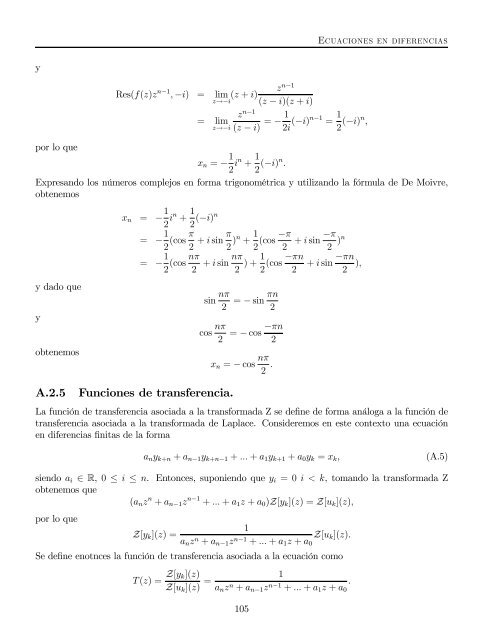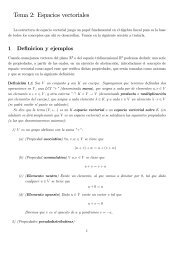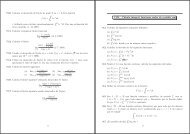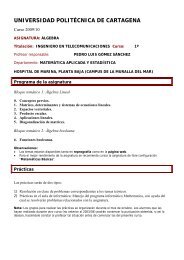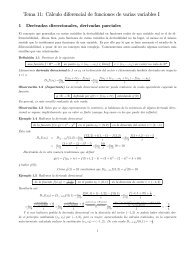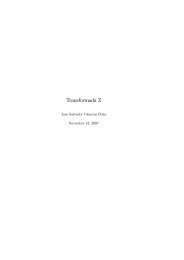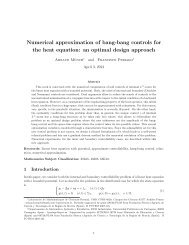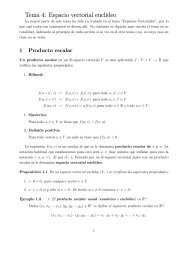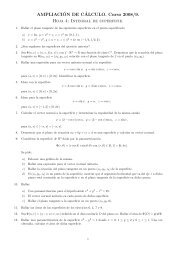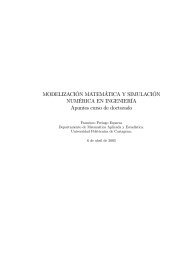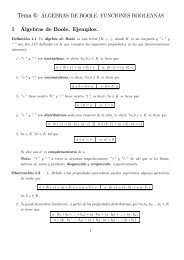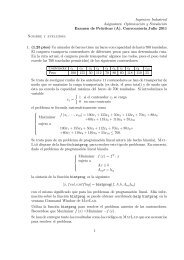Métodos numericos: ecuaciones diferenciales ordinarias
Métodos numericos: ecuaciones diferenciales ordinarias
Métodos numericos: ecuaciones diferenciales ordinarias
You also want an ePaper? Increase the reach of your titles
YUMPU automatically turns print PDFs into web optimized ePapers that Google loves.
y<br />
por lo que<br />
Res(f(z)z n−1 , −i) =<br />
z<br />
lim (z + i)<br />
z→−i n−1<br />
(z − i)(z + i)<br />
=<br />
z<br />
lim<br />
z→−i<br />
n−1 1<br />
= −<br />
(z − i) 2i (−i)n−1 = 1<br />
2 (−i)n ,<br />
Ecuaciones en diferencias<br />
xn = − 1<br />
2 in + 1<br />
2 (−i)n .<br />
Expresando los números complejos en forma trigonométrica y utilizando la fórmula de De Moivre,<br />
obtenemos<br />
xn = − 1<br />
2 in + 1<br />
2 (−i)n<br />
= − 1 π π<br />
(cos + i sin<br />
2 2 2 )n + 1 −π −π<br />
(cos + i sin<br />
2 2 2 )n<br />
= − 1 nπ nπ<br />
(cos + i sin<br />
2 2 2 )+1<br />
−πn −πn<br />
(cos + i sin<br />
2 2 2 ),<br />
ydadoque<br />
sin nπ πn<br />
= − sin<br />
2 2<br />
y<br />
cos nπ −πn<br />
= − cos<br />
2 2<br />
obtenemos<br />
xn = − cos nπ<br />
2 .<br />
A.2.5 Funciones de transferencia.<br />
La función de transferencia asociada a la transformada Z se define de forma análoga a la función de<br />
transferenciaasociadaalatransformadadeLaplace. Consideremos en este contexto una ecuación<br />
en diferencias finitasdelaforma<br />
anyk+n + an−1yk+n−1 + ... + a1yk+1 + a0yk = xk, (A.5)<br />
siendo ai ∈ R, 0 ≤ i ≤ n. Entonces, suponiendo que yi =0i


